Florida's first redistricting proposals are in. Members of the public have started to submit maps on FloridaRedisting.gov.
Even as hearings with lawmakers remain dominated by tutorials on the map-drawing software, amateur cartographers from across the state and beyond have already jumped into the process. Congressional maps have been submitted by Oscar Bednar of Austin, Texas; Anthony Cabrera of Bradenton; Bryson Leininger of St. Cloud; Chris Nurse of Groveland, and Rabi Warda of Jacksonville.
Lawmakers this year have required the identity of all submitted maps to be available with the proposals. None of the individuals to file maps thus far has any significant digital footprint, and it's unclear what interests they may hold in the reapportionment process.
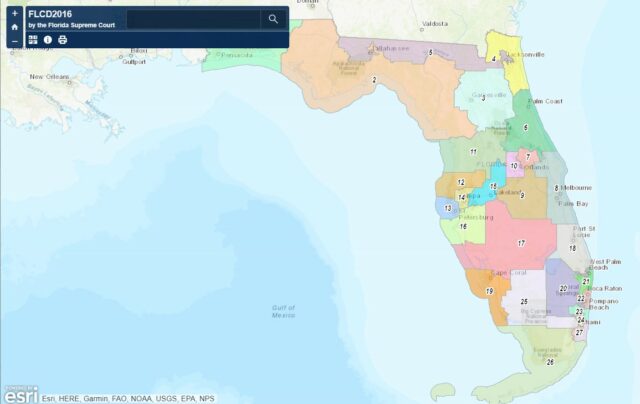
Florida's baseline map shows the existing 27 congressional districts as they stand pre-redistricting.
But the maps do demonstrate how many ways Florida can be cut into 28 parts. In the case of Nurse, the eager map maker also submitted designs on a 40-district state Senate and a 120-district state House plan as well.
Rep. Tyler Sirois, chair of the House Congressional Redistricting Subcommittee on Wednesday expressed excitement that proposals have already started to roll in.
"As far as public input goes, this website is phenomenal," Sirois said. "The resources it offers to the residents of our state and our Legislature is something to be proud of moving forward."
So what do the submissions look like so far? All make room for an extra Congressional District awarded to the Florida based on population growth identified in the 2020 Census. But there's enormous differences in each proposal.
Cabrera
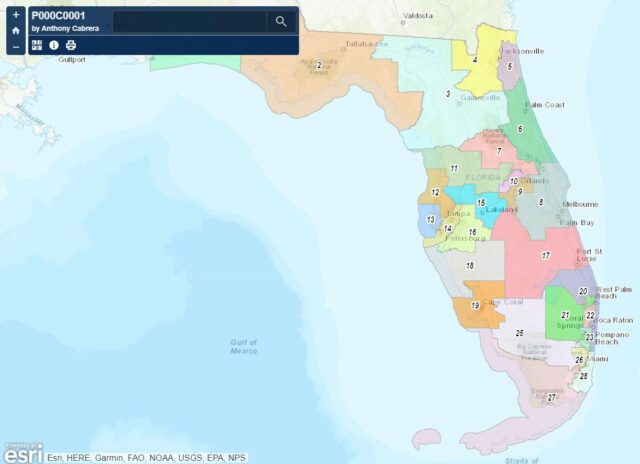
Anthony Cabrera's map.
The first publicly submitted map came on Sept. 23 from a Bradenton man. It makes a notable shift in Tampa Bay by stretching a district that includes Tampa, most comparable to Democratic U.S. Rep. Kathy Castor's district now, and grabbing portions of St. Petersburg. The resulting 14th district would be 23% Black and more than 20% Hispanic. An open district now represented by Democratic U.S. Rep. Charlie Crist shifts northward.
But it also fiddles on the East coast, taking what most closely represents Republican U.S. Rep. Brian Mast's Stuart-centered district and stretching it along most of South Florida's coast all the way to Hollywood and Hallandale. Meanwhile in Central Florida, Democratic U.S. Rep. Stephanie Murphy's home community of Winter Park becomes part of a new 10th district, a reshaped version of the district being vacated by Democratic U.S. Rep. and U.S. Senate candidate Val Demings.
Nurse
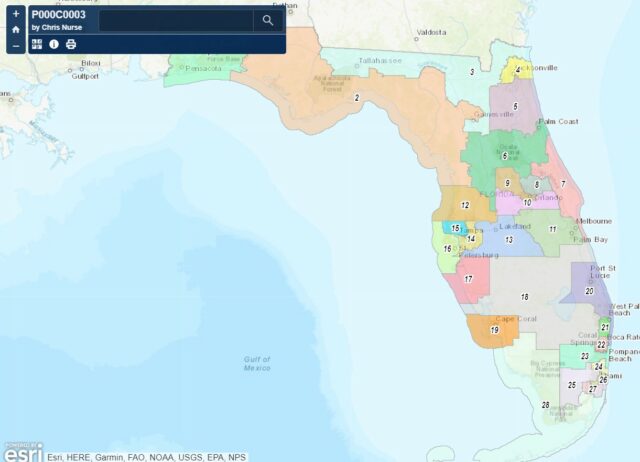
Chris Nurse's map.
Nurse submitted a map on Sept. 28 that also significantly reimagines the greater Orlando area's makeup. This would imagine a 10th district that included most of north Lake County including parts of The Villages, and stretched into downtown Orlando. But this map notably leaves Crist's Pinellas-based district largely intact, just making needed population additions from across the Sunshine Skyway in parts of Manatee County including Anna Maria and Palma Ceia, now represented by Longboat Key Republican U.S. Rep. Vern Buchanan.
But there's reason to wonder if this map would hurt minority representation. In North Florida, the map appears to put Gainesville, home to Republican U.S. Rep. Kat Cammack, in the same district as Democratic U.S. Rep. Al Lawson, while also stretching to the east coast and putting much of Nassau County in the district. In South Florida, the map largely eliminates the existing 20th District, formerly represented by the late Democratic U.S. Rep. Alcee Hastings and the site of an ongoing Special Election.
Warda
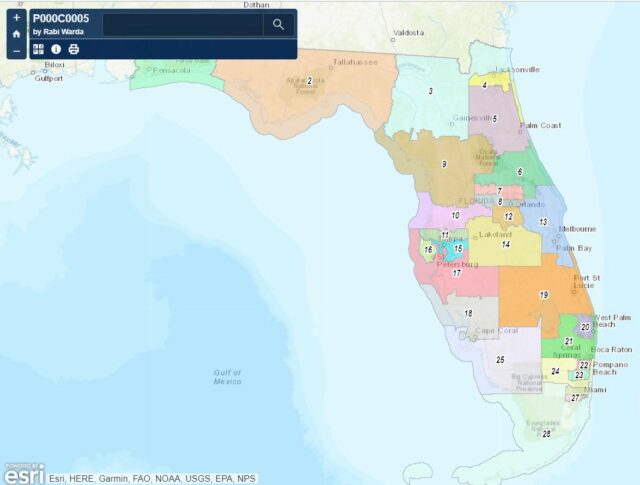
Rabi Warda's map.
Major changes to the North Florida landscape come in the map submitted from Jacksonville on Oct. 2. This map also puts Lawson in a district with a Republican incumbent, Republican U.S. Rep. Neal Dunn. This puts much of Jacksonville into Republican U.S. Rep. John Rutherford's district, which would also run along much of the coast. Murphy's Winter Park would be in a newly imagined 7th district that spans as far east as Okahumpka and as far west as Oviedo, imaginng the University of Central Florida and Howey-in-the-Hills as part of the same district. It seems to put Florida's new district, the 14th district in this map, largely in the middle of the state, including Lakeland and much of inland Florida to the east.
In South Florida, Miami is laterally bisected, with Hialeah Republican U.S. Rep. Mario Diaz-Balart shedding much of his Collier County constituency for parts of north Miami. U.S. Rep. Maria Elvira Salazar's district would reach further inland to U.S. 27. Meanwhile, Democratic U.S. Rep. Frederica Wilson's terrain would expand geographically and include much of Hastings' old district. Much of the old 20th would also go to Democratic U.S. Rep. Ted Deutch of Boca Raton.
Leininger
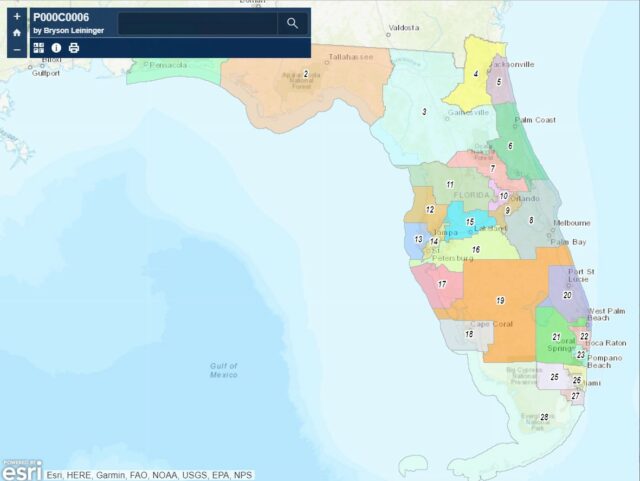
Bryson Leininger's map.
This Oct. 11 submission leaves South Florida's districts largely intact, outside of shifting some of Diaz-Balart's territory into that of Republican U.S. Rep. Carlos Giminez. But in Tampa Bay, this mapmaker also sees reason to stretch Castor's district across the Bay to include much of South Pinellas. North Pinellas becomes the territory of Republican Rep. Gus Bilirakis, while an imagined 12th district that includes Spring Hill and New Port Richey jumps onto the Gulf Coast, south of an 11th district that looks very much like the one represented by Republican U.S. Rep. Dan Webster now.
Winter Park moves to the Orlando-centered 10th district, while the 7th district wraps around from Oviedo to north of The Villages and well as past Belleview. In North Florida, Lawson's district effectively vanishes and he's living with Dunn. Jacksonville largely gets split into two districts, the 4th and 5th, one of which will be a relatively safe seat for Republican U.S. Rep. John Rutherford to seek reelection, while the center of Cammack's jurisdiction shifts west.
Bednar
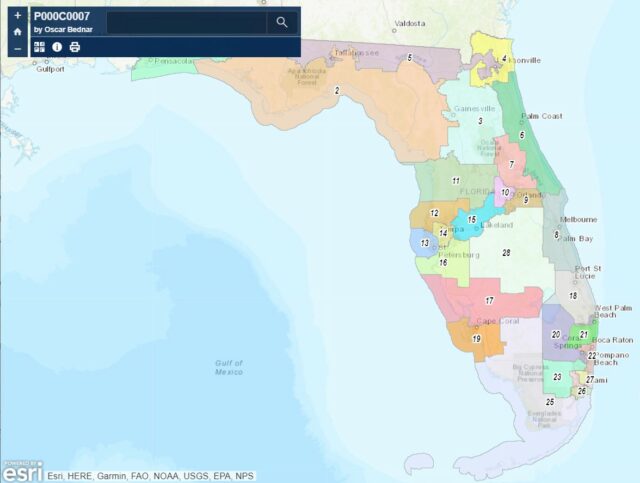
Oscar Bednar's map.
The most recent map, uploaded on Oct 13, is the first to come from outside of the state of Florida. So what's this Texas-originated outline entail? This proposal makes Republican U.S. Rep. Michael Waltz's district more closely hug the coast, stretching further north into Rutherford country, but minimally disrupting Lawson's lines. Winter Park ends up as the crossroads for three districts, including a 7th district that stretches north to Seville, a 9th that holds UCF south to Kissimmee, and a 10th district that juts east to Maitland. But it still leaves room for three Orlando area Representatives.
Much of the constituency of Democratic U.S. Rep. Darren Soto's over-populated district goes into a new 28th district, a geographically expansive jurisdiction including much of the Florida Heartland including Lake Placid and Fort Meade, while stretching up to include Winter Haven in the north. Tampa Bay would go largely unscathed. But Diaz-Balart would shed the whole west side of his district, all of it reapportioned into Giminez turf, and Florida's longest-serving Congressman would suddenly have a district largely wrapped around Wilson's. Weston Democratic U.S. Rep. Debbie Wasserman Schultz would lose any coastline and take on more agricultural land. South Miami would be left to Salazar.







No comments:
Post a Comment